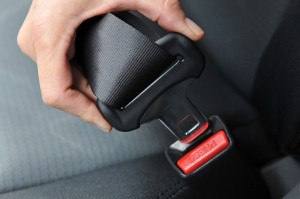U.S. high school students have shown significant progress over the past two decades in improving many health-risk behaviors associated with the leading cause of death among youth—motor vehicle crashes—according to the 2011 National Youth Risk Behavior Survey (YRBS) released last week by the Centers for Disease Control and Prevention.
Despite the progress, American teens continue to engage in other dangerous practices such as texting and emailing while driving.
Although motor vehicle crashes account for more than one in three U.S. teen deaths each year, the survey’s findings show dramatic improvements during the past 20 years in motor vehicle safety among youth:
- From 1991 to 2011, the percentage of high school students who never or rarely wore a seatbelt declined from 26 to eight.

- From 1991 to 2011, the percentage of students who rode with a driver who had been drinking alcohol during the past 30 days declined from 40 to 24.
- The percentage of high school students who had driven a car during the past 30 days when they had been drinking alcohol decreased from 17 in 1997 to eight in 2011.
Between 2009 and 2011 encouraging improvements were also shown in the percentage of students wearing a seatbelt, not riding with a driver who had been drinking alcohol and not driving a car when they had been drinking alcohol.
Despite this progress, the YRBS found the use of technology among youth has resulted in new risks; specifically, one in three high school students had texted or e-mailed while driving a car or other vehicle during the past 30 days.
The survey also found that one in six were bullied through email, chat rooms, instant messaging, websites or texting during the past 12 months.
2011 was the first year the YRBS included questions about bullying through electronic media and about texting or emailing while driving.
Source: CDC
Was this article valuable?
Here are more articles you may enjoy.

 Flooding in California Leads to Soaked Roads, Water Rescues and 1 Death
Flooding in California Leads to Soaked Roads, Water Rescues and 1 Death  NYT Asks Judge to Dismiss Trump’s ‘Implausible’ Defamation Suit
NYT Asks Judge to Dismiss Trump’s ‘Implausible’ Defamation Suit  Marijuana’s Move to Schedule III: What it Really Means for Cannabis Insurance
Marijuana’s Move to Schedule III: What it Really Means for Cannabis Insurance  Rare Weather Warning Issued as Strong Gusts Fuel Colorado Wildfire Threats
Rare Weather Warning Issued as Strong Gusts Fuel Colorado Wildfire Threats 